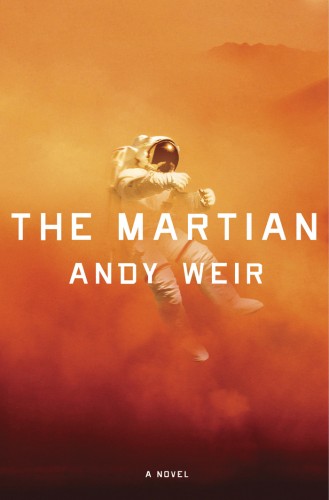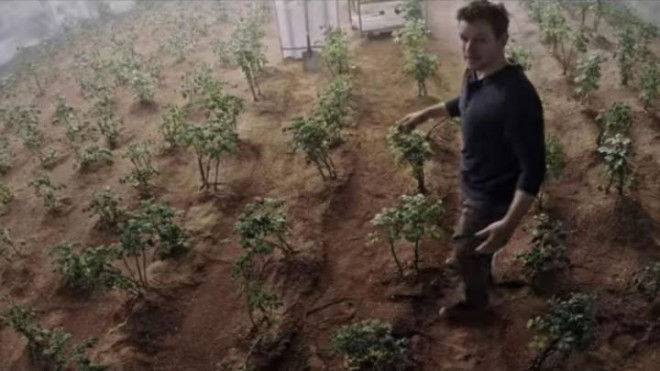Imagine that you are a castaway on a dead planet. You only have provisions for a few days and you are absolutely alone. How would you survive? Andy Weir turned this question into his best-selling novel, The Martian. It is a tale of man versus Mars.
The golden age of science fiction
The so-called golden age of science fiction began in the 1930s with stories written by the likes of Robert Heinlein, Arthur C. Clarke and Isaac Asimov. They were published in cheap pulp fiction magazines not known for high literary quality. But these hard sci-fi stories were known for their attention to scientific detail, their leaps of imagination and for being fun to read.
Asimov’s “Marooned off Vesta” (1939) envisioned space castaways stranded in orbit almost within spitting distance of a base on our solar system’s largest asteroid. Author Andy Weir continued this tradition when he transformed an exercise in what if? scientific extrapolation into his debut novel, The Martian.
In an interview with Amazing Stories magazine, Andy says he was inspired by the true stories behind the Apollo missions, especially the ingenuity which allowed the crew of Apollo 13 to safely return home after an explosion depleted their oxygen supply and pushed their spacecraft off its course to what would have been the third manned landing on the moon.
Stranger than fiction
The author’s first difficulty is that, unlike the true stories behind Apollo 13, the Shackleton expedition and the discovery of Hawaii via Polynesian canoes, fiction must be believable. The setting adds to this plausibility challenge. It is fun to imagine Martian seas, canals and crystal cities but numerous spacecraft have confirmed that this is a cold and dead planet. It averages more than 40 million miles away from our world which so generously provides the air, water, nutrients and warmth to support an amazing variety of life.
How could a man survive here?
Remember that time when I was lost on Mars?
Andy begins this novel as a first-person journal by a stranded botanist named Mark Watney. Our assumption that the journal writer survived can take away some of the immediacy of an adventure, but it works here. The character’s struggle in what seems an impossible situation leave us wondering how he’ll live another “sol” (Martian day.)
Like much of the hard sci-fi that came before it, you won’t find complex characters or tremendous emotional depth in The Martian. Mark Watney isn’t the kind of gentle astronaut we’ve come to know from people like Commander Chris Hadfield. He seems to swear just as much at the people who are trying to help him as he does at the planet he suspects is trying to kill him. There are times when he doesn’t seem to have the emotional maturity to be selected for a Mars mission. But his blend of sardonic humor and can-do spirit will be be understood, if not appreciated by the folks at NASA.
How is the ecological science?
As a botanist, Mark Watney is the perfect kind of superhero for a Mars mission. He understands that plants require water, warmth, nutrients, bacteria and pollinators. Bacteria, insects and other forms of life have colonized the geysers, icebergs and farthest shores of our planet. But they would not survive in the harsh Martian environment. Sustainable colonization of Mars will require people who understand the environmental requirements of living things. Like our ancestors more than 10,000 years, we will have to invent agriculture to bring life to this desert.
The film version used Jordan’s Wadi Rum desert as a stand-in for the Martian landscape but there is a significant difference. Wadi Rum has enough air and water to support a variety of life. As far as we know, Mars doesn’t.
How is the physical science, on Mars?
As an amateur astronomer with a degree in physics, I’m happy to report that the science in this movie is well above average, approaching what we once demanded of this genre. Details around ion drives, microgravity tether dynamics, Houghman transfers, the most calorie-efficient crop per acre and the Martian environment are accurate more often than not. The fact that nerds are complaining about the force of Martian winds and the color of Hydrogen flames gives you some idea of how much suspension of disbelief will be required.
The science in the book is detailed and rest assured there are numerous websites full of nerds, even botany nerds who are busy trying to find holes in the science. But Andy did his homework and the holes are few and far between.
Is it as good as the movie?
It’s better. The movie was good and you should see it, but you’ll find more humor in the book. You’ll also find more scientific and environmental details. What crop can survive on poor sandy soil and would provide a high caloric value per acre? How would you make water if you had only rocket fuel? How many watts will he get out of a square meter of solar panels on Mars? How will he stay warm on a planet where the average temperature is more than fifty degrees below zero celsius?
This book might even replace the “Lost on the moon” exam NASA apparently gave at job interviews:
Your spaceship crashed on the moon. Rank these items to decide what you should bring with you on your journey back to the lunar base:
1) A Magnetic Compass
2) Two .45 calibre pistols
3) 5 gallons of Water
4) 2 air tanks
5) A star map
6) A box of matches
7) Parachute silk
etc…
Water, water everywhere, but…
Evidence of liquid water was discovered on Mars during production but I wouldn’t want to change the story any more than I’d want to see dust and craters where Ray Bradbury imagined canals and crystal cities in Martian Chronicles.
One of Isaac Asimov’s stories required the planet Mercury to have an eternal day side and an eternal night side. When asked what he thought of the discovery that this wasn’t true, he said that he wasn’t about to change his story to suit the whims of NASA. And neither should Andy Weir. Future Martian castaways will be thankful to find water, but it may be so contaminated with salt and perchlorate that they may have to resort to Mark Watney’s solution. Read the book to find out what it is.



